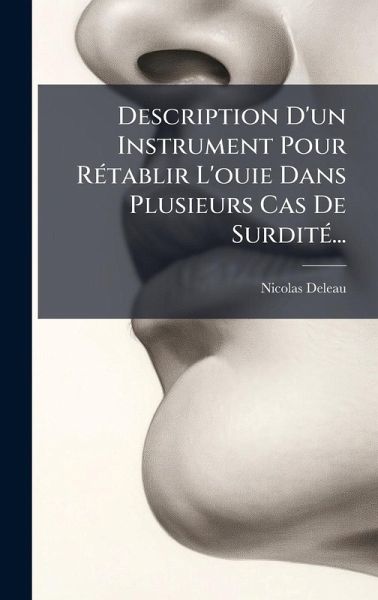
Description D'un Instrument Pour RÃ(c)tablir L'ouie Dans Plusieurs Cas De SurditÃ(c)...
Versandkostenfrei!
Versandfertig in über 4 Wochen
25,99 €
inkl. MwSt.
Weitere Ausgaben:

PAYBACK Punkte
13 °P sammeln!
Description D'un Instrument Pour Rétablir L'ouïe Dans Plusieurs Cas De Surdité... by Nicolas Deleau details an invention designed to restore hearing in certain cases of deafness. This historical work provides insight into the early development of hearing aids and the understanding of auditory impairments during the 18th century. Deleau's description offers a valuable glimpse into the intersection of medical innovation and the challenges faced by individuals with hearing loss. The document serves as a testament to the ongoing quest to improve the quality of life through technological advance...
Description D'un Instrument Pour Rétablir L'ouïe Dans Plusieurs Cas De Surdité... by Nicolas Deleau details an invention designed to restore hearing in certain cases of deafness. This historical work provides insight into the early development of hearing aids and the understanding of auditory impairments during the 18th century. Deleau's description offers a valuable glimpse into the intersection of medical innovation and the challenges faced by individuals with hearing loss. The document serves as a testament to the ongoing quest to improve the quality of life through technological advancements in medicine. This work has been selected by scholars as being culturally important, and is part of the knowledge base of civilization as we know it. This work was reproduced from the original artifact, and remains as true to the original work as possible. Therefore, you will see the original copyright references, library stamps (as most of these works have been housed in our most important libraries around the world), and other notations in the work. This work is in the public domain in the United States of America, and possibly other nations. Within the United States, you may freely copy and distribute this work, as no entity (individual or corporate) has a copyright on the body of the work. As a reproduction of a historical artifact, this work may contain missing or blurred pages, poor pictures, errant marks, etc. Scholars believe, and we concur, that this work is important enough to be preserved, reproduced, and made generally available to the public. We appreciate your support of the preservation process, and thank you for being an important part of keeping this knowledge alive and relevant.


